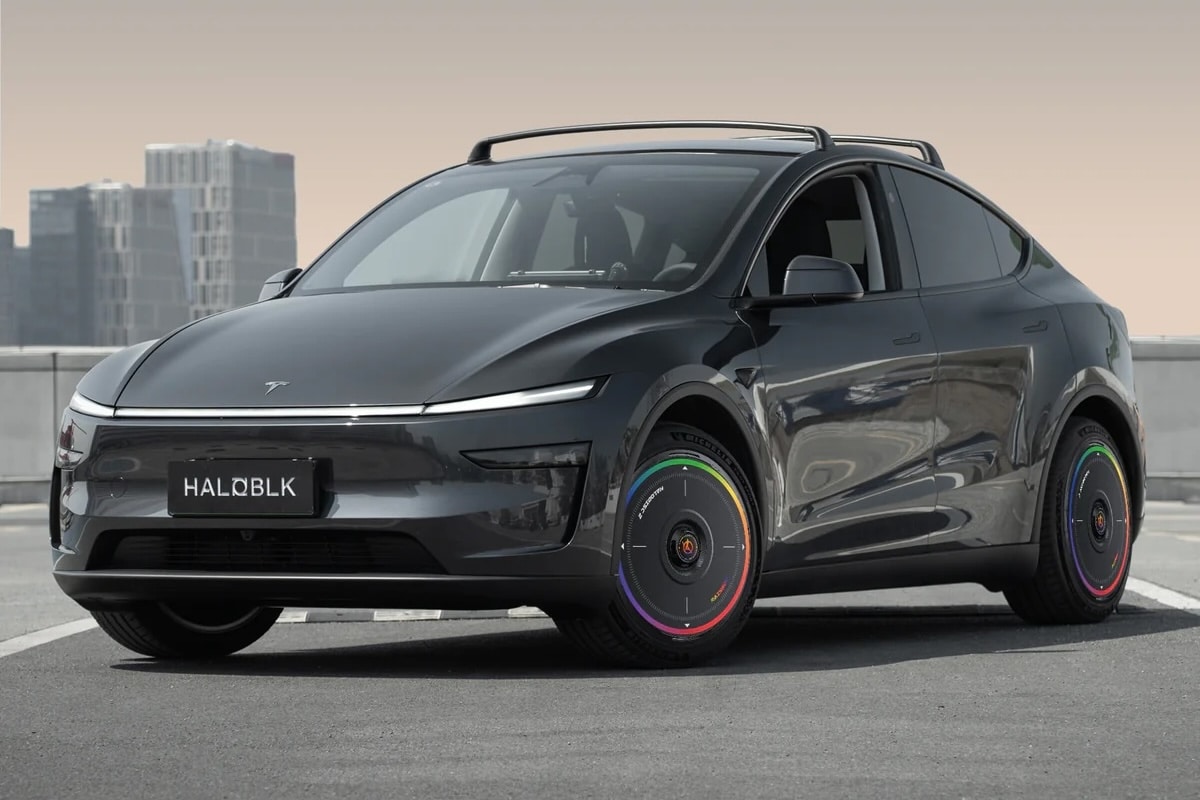Tesla: These Hubcaps Promise +10% Range. Scam?
The American specialist in accessories for Tesla, HALOBLK, presents aerodynamic wheel covers. Miracle or just a scam?
The rise of electric vehicles has brought back an old obsession of engineers: aerodynamics. Every point of drag gained translates directly into additional kilometers traveled. Among the most visible solutions, so-called “aerodynamic” wheel covers are blossoming on the market. Their promise is simple: reduce the turbulence generated by the wheels to extend range. Some manufacturers, like HALOBLK with its HALODISC 2 designed for the Tesla Model Y, even promise a +10% range increase. This is an absolutely outrageous figure, because on a Long Range Rear-Wheel Drive version already enjoying 600 km of range, the gain would be 60 km! But behind this appealing promise, what do science and user feedback really say?

You might be interestedin this article:
A real concept, but limited
It must first be acknowledged that the principle is solid. The wheels are a major source of aerodynamic disturbances: they stir the air, create vortices, and increase resistance. Flat and shaped covers allow for the channeling of this flow. Tesla itself equips its Model 3 and Model Y with so-called “Aero” covers, the effectiveness of which has been validated in wind tunnel tests.
In reality, the measured gain on the highway with this type of accessory is around 2 to 5%. Enough to justify their presence as standard on certain configurations, but far from turning a car into a model of efficiency. 10% represents more what manufacturers sometimes spend years gaining through global optimization (body, underpinnings, tires, power electronics). This is the case between the two generations of Tesla Model Y, the Juniper sold since 2025 achieving this. To imagine that a simple plastic cover could match this effort, involving several billion euros in development, is hard to swallow.

Independent tests and skepticism
American specialized media (notably TesBros) mention a real gain of around 4 to 5% on the highway with the HALODISC, which is already superior to most standard covers. Reddit reflects a shared skepticism: “5–10% more? Are you saying we gain 30 miles at once?” wonders a Model Y owner.
These reactions illustrate well the gap between the commercial promise and the perception of experienced users. The most flattering figures likely correspond to extremely optimized testing scenarios: high stabilized speed, perfectly inflated tires, no crosswinds, ideal temperature… all conditions rarely met in real life.
Ultimately, buying HALODISC should be based on what they truly offer: a bold look, protection for rims, and a small efficiency boost. But believing in a 10% jump in range would mean getting carried away by overly ambitious communication.
Are covers impossible to justify economically?
At around 300 euros for the 4 HALODISC covers, they cannot realistically be justified by the energy savings they promise. With a realistic gain of about 3% in range, that’s a savings of barely €0.10 every 100 km at the average electricity rate (€0.22/kWh in France in 2025); it would take nearly 283,000 km to amortize the initial investment. In other words, their appeal lies not in energy profitability, but rather in aesthetics, rim protection, and the small psychological bonus associated with slightly increased range.
And what do you think? Write it in the comments.
ALSO READ: Tesla: The 84 kWh battery, a programmed obsolescence?
This page is translated from the original post "Tesla : ces enjoliveurs promettent +10% d’autonomie. Arnaque ?" in French.
We also suggestthese articles:
Also read






